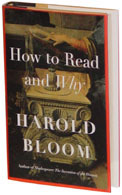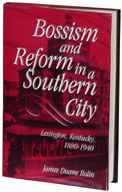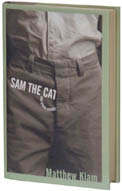|
The title of Harold Bloom's latest book, How to Read and Why, insinuates his intent to augment our reading ability. However, with only scant advice, perhaps the 70-year-old Yale professor and controversial literary critic should have titled his book What to Read. Bloom endlessly compares and contrasts 40 writers in an effort to connect them to Shakespeare, Cervantes, or Melville, all of whom he sees as the influential progenitors of all great writers. Actually, Bloom's book is less a guide to enhance our reading ability than a sneaky strategy for re-marketing his antiquated anxiety of influence theory from the 1970s in which he stated that every writer's work was the misinterpretation of a literary predecessor. In chapters categorized by short story, poem, novel, and play, Bloom selects the best works in each genre by writers such as Chekhov, Hemingway, Dickinson, Shelley, Pynchon, Faulkner, and Ellison. In the short story chapter, for example, he summarizes 18 stories by nine writers. All chapters close with brief "Summary Observations" where Bloom passionately suggests we read slowly and with openness to increase wit, imagination, and our entire consciousness. However, no matter how much you've read, you'll still have trouble navigating his self-promoting and convoluted plot summaries. Bloom's previous book, The Western Canon, demonstrated that he's hell-bent on keeping the literary canon closed, especially to recent works by individuals representing groups who object to his ideological pedantry. It seems that his latest book is an attempt to fortify his ivory tower, as it extinguishes challenges by feminist, multiculturalist, and queer theoreticians. So, unless you're interested in watching an old man masturbate to a picture of himself, save your cash. -Clint Stivers
When one thinks of turn of the century political bosses - which rarely happens of course, but that's not the point - one usually thinks of a small group of white men in rumpled suits operating out of some back room in New York City. Bolin literally brings that stereotype home with his book on boss politics in Lexington. The central figure in this study is Billy Klair, who for decades, dominated Lexington politics and was also a force in state politics. When reading Bolin's acknowledgments, one gets the impression that Bolin is a rather kind-hearted person. While this is generally a good thing, the downside is that it seems to make Bolin more charitable to Klair than he deserved. Bolin concedes that Klair manipulated government affairs for his own gain, but what Klair was guilty of, according to Bolin, was "honest graft." Because Klair did not use public money to make himself rich, Bolin puts a positive spin on Klair's habit of using the public's resources as if they were his own. Klair manipulated the system to instill loyalty in people, so he could be in control. Apparently, a lust for power is more honest than a lust for money. Make no mistake, this complaint is directed more at the tone of the book than its substance. Bolin's work is well researched, and it should prove interesting and useful to anyone focused on American politics, southern history, or the history of Lexington. -Tim Holder
Matthew Klam's debut collection of stories highlights both the complexities of love and the way love is defined by one's overall abandonment to fate. Forwarding the theory that we don't choose who we love, Klam introduces readers to a myriad of characters simultaneously engrossed in and utterly confused by their relationships. There's Sam, a man instantly conflicted about his sexual orientation after meeting a man at a party; Vincent, stuck in the throes of an on-again, off-again relationship and stricken with the possibility of being a sperm donor for his sister-in-law; then there's Mike and Jack, two men admittedly smitten for life; and a nameless character who has succumbed to the unavoidable inertia of his secure relationship. Klam does not question love, but rather makes light of its inherent difficulties and reminds us why, exactly, it is that we are all so enchanted with the idea of love and companionship; "You know that pain you feel when you see an incredibly beautiful face: You look at her and you want to know what she's thinking and you're sitting there guessing and you don't even come close? You have to kiss her and hold her sweet face in your hands... and make her all yours - even when she is yours?... I look at her and I feel that pain." Klam's writing brings you into these couples' lives, into the feeling and emotion of love and all its intricacies. Readers will laugh out loud at his characters' ravings and concoctions. Sam the Cat is a definite page turner, and Matthew Klam is here to stay. -Christina Dwiggins
|
 HOW TO READ AND WHY
HOW TO READ AND WHY  BOSSISM AND REFORM IN A SOUTHERN CITY: LEXINGTON, KENTUCKY, 1880-1940
BOSSISM AND REFORM IN A SOUTHERN CITY: LEXINGTON, KENTUCKY, 1880-1940  SAM THE CAT AND OTHER STORIES
SAM THE CAT AND OTHER STORIES